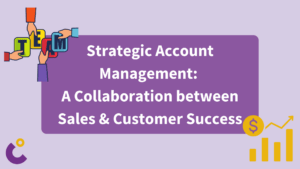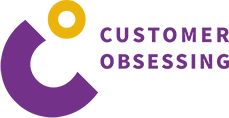
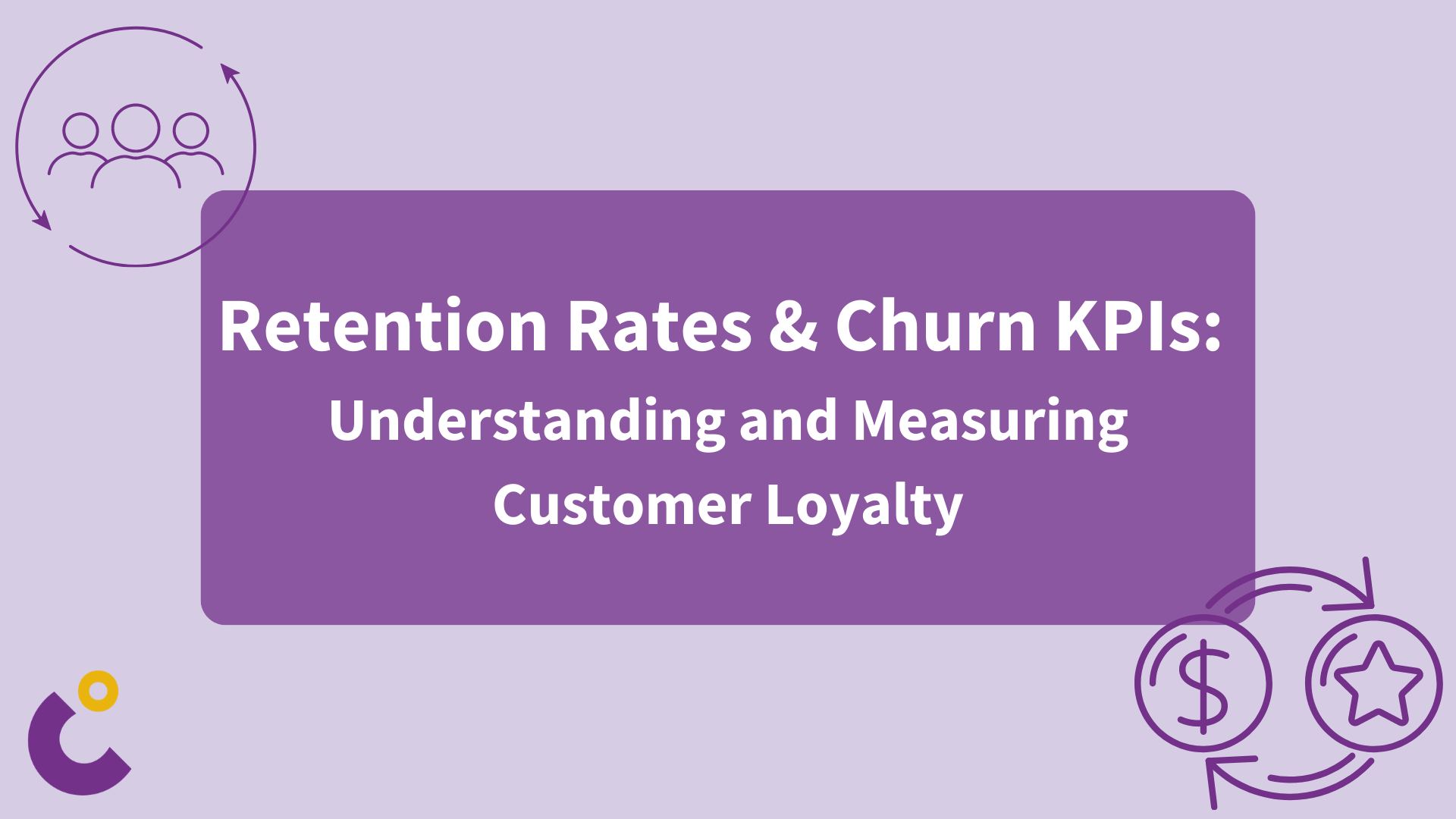
Retention Rates & Churn KPIs: Understanding and Measuring Customer Loyalty
As a business owner or marketer, you want to ensure that your customers keep coming back and that they are satisfied with your products or services. Retention rates and churn KPIs are essential metrics that help measure customer loyalty and provide insights into your business’s overall performance.
Retaining customers is vital for business growth and success – the numbers speak for themselves:
- Studies have shown that it costs five to 25 times more to acquire a new customer than to retain an existing one
- Loyal customers are more likely to spend more money, make repeat purchases, and refer new customers to your business: Increasing customer retention rates by 5% increases profits by 25% to 95%
To help you understand the importance of retention rates and churn KPIs, we will explore different metrics and their differences below
Gross (Revenue) Retention Rate (GRR)
Gross Revenue Retention Rate calculates the percentage of total revenue retained from existing customers over a given period, typically on a monthly or annual basis. GRR is calculated by dividing the total revenue from existing customers at the end of the period by the total revenue from the same set of customers at the beginning of the period.
Net (Revenue) Retention Rate (NRR)
Net Revenue Retention Rate also measures the revenue retained from existing customers over a specific period, including expanding revenue from upsells, cross-sells or expansions. It is calculated by dividing the total revenue from existing customers at the end of the period including any expansion revenue, by the total revenue from the same set of customers at the beginning of the period.
Customer Retention Rate (CRR)
Customer retention rate measures the percentage of customers that continue to use your product or service over a given period. It is calculated by dividing the number of customers at the end of a period by the number of customers at the beginning of that period.
Renewal Rate
Renewal rate measures the percentage of customers that renew their subscription or contract with your business over a given period. This KPI is calculated by dividing the number of customers that renew their subscription or contract by the total number of customers that are up for renewal during a period.
Churn Rate
Churn rate measures the percentage of revenue you lost due to cancellations or downgrades in a given period of time. This KPI is calculated by dividing the value of cancellation and downgrades during a period by the total revenue at the beginning of that period.

Gross Retention & Net Retention – Differentiation
Both GRR and NRR are important metrics for assessing the health and growth potential of a company’s customer base. A high GRR indicates strong customer retention, while a high NRR suggests that customers are not only being retained but also generating additional revenue through expansions.
Gross retention lets you measure your revenue’s stability without taking into account expansion opportunities. In addition, you can track downgrades and churns to see how they impact losses.
In addition, Net Retention helps you pay attention to how fast your revenue increases from upgrades, so you can formulate your upsell and cross-sell strategies accordingly. If you are falling behind in any of these areas, you can recover by improving onboarding to increase adoption and upgrading.
Why Are Retention Rates and Churn KPIs important for Customer Centricity?
Retention rates and churn KPIs are crucial for customer centricity because they provide insights into customer loyalty and satisfaction. By measuring these metrics, businesses can identify areas of improvement and implement strategies to retain more customers, reduce churn, and increase revenue.
Moreover, retention rates and churn KPIs are critical for customer success because they allow businesses to:
- Measure the effectiveness of customer retention strategies
- Identify customer segments that are at risk of churning and create targeted retention campaigns
- Understand the reasons behind customer churn and implement solutions to address them
- Measure the ROI of customer retention efforts
- Evaluate the overall health of the business and identify areas for growth
In conclusion, retention rates and churn KPIs are essential metrics that help businesses understand and measure customer loyalty. By tracking these KPIs, businesses can identify areas of improvement, create targeted retention campaigns, and increase revenue.

How to improve Retention Rates and increase churn?
Improving retention rates and reducing churn are critical objectives for any Customer Success team. By prioritizing customer satisfaction and leveraging data, you can build strong, long-lasting relationships and drive business growth. Here’s a quick overview of strategies that can help achieve these goals:
1️⃣ Proactive Engagement: Foster strong relationships with customers by proactively reaching out, offering support, and providing value-added resources. Regular check-ins, personalized onboarding, and ongoing training can go a long way in ensuring customer success and satisfaction.
2️⃣ Customer Success Plans: Develop customized success plans for each customer, outlining specific goals, milestones, and action steps. By aligning your efforts with their unique needs and desired outcomes, you can enhance the customer experience and increase the likelihood of long-term retention.
3️⃣ Data-Driven Insights: Leverage data and analytics to gain insights into customer behavior, usage patterns, and indicators of potential churn. Identify early warning signs, such as decreased activity or disengagement, and proactively address concerns before they escalate.
4️⃣ Proactive Risk Mitigation: Identify at-risk customers and implement proactive measures to mitigate potential issues. Offer targeted training, conduct regular health checks, and provide additional resources to address their specific challenges and ensure they are achieving their desired results.
5️⃣ Continuous Education: Help customers unlock the full potential of your product or service through continuous education initiatives. Offer webinars, workshops, and knowledge-sharing sessions that empower them to maximize value, explore advanced features, and stay updated on industry best practices.
6️⃣ Feedback and Collaboration: Actively seek feedback from customers and incorporate their input into product development and improvement processes. By involving them in the decision-making and problem-solving, you foster a sense of ownership and partnership, increasing their loyalty and reducing churn.
>> Learn more about how to increase Customer Retention trough Customer Obsession
Long story short… Improving business success and customer loyalty by monitoring retention rates and Churn KPIs
Remember, improving retention rates and reducing churn is an ongoing process. Continuously assess and refine your strategies based on customer feedback, industry trends, and evolving needs. With a customer-centric mindset and a proactive approach, you can build strong, long-lasting relationships that drive business growth and success.
If you want to improve your business’s customer centricity and increase customer loyalty, start tracking retention rates and churn KPIs today.
Let’s identify your areas for improvement, create targeted retention campaigns and increase revenue together.
>> Contact us
This might also interest you


Beyond Internal Walls: Unlocking the Power of External Customer Journey Mapping
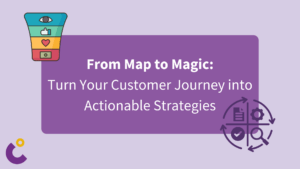
From Map to Magic: Turn Your Customer Journey into Actionable Strategies
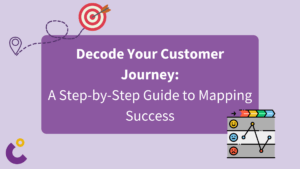
Decode Your Customer Journey: A Step-by-Step Guide to Mapping Success

Beyond the Score: Transforming Net Promoter into a Growth Engine – Net Promoter System
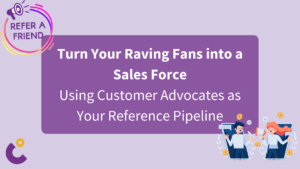
Turn Your Raving Fans into a Sales Force: Using Customer Advocates as Your Reference Pipeline
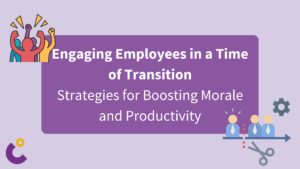
Engaging Employees in a Time of Transition: Strategies for Boosting Morale and Productivity
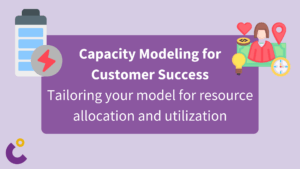
Capacity Modeling for Customer Success

Data Driven Customer Success
